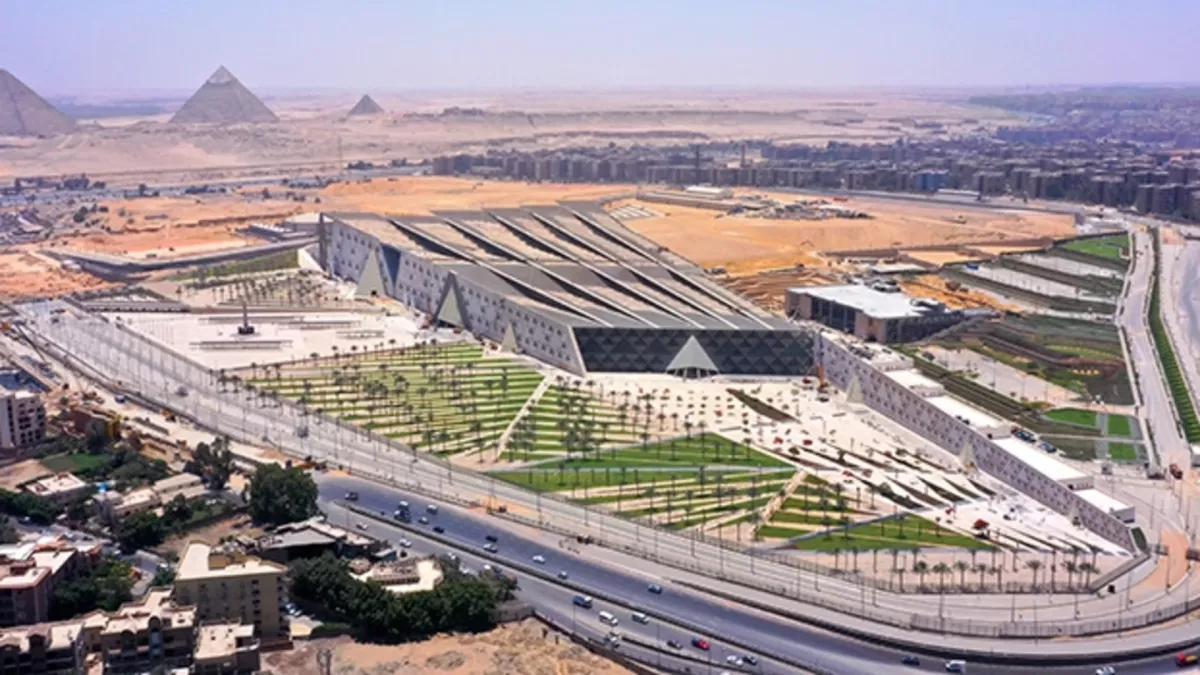What awaits visitors inside Egypt’s majestic new museum
Egypt’s government first announced an international design competition for the Grand Egyptian Museum 23 years ago — a monumental complex envisioned to hold 100,000 ancient artefacts just a short distance from the Pyramids of Giza. From 1,556 global entries, a proposal by a little-known Irish architecture firm was selected. Yet, after enduring decades of crises, including political turmoil and a global pandemic, the architects had to wait more than two decades to see their vision finally brought to life.
Now, after countless delays and interruptions, Egypt’s long-awaited national treasure officially opens its doors on November 1. The government has even declared a public holiday to mark the historic occasion, as reported by Dezeen.
Covering 240,000 square meters, the Grand Egyptian Museum stands as the largest cultural institution in the world dedicated to a single civilization, displaying some of the most fragile and invaluable relics of Egypt’s ancient past.
Enduring obstacles
The path to completion was far from smooth. The project weathered the 2011 Arab Spring revolution, a military coup two years later, and the far-reaching disruptions of the Covid-19 pandemic.
Róisín Heneghan, co-founder of Heneghan Peng Architects — the Irish firm behind the design — noted that while the original plans evolved over time, such adjustments are natural for a project of this magnitude.
“Big projects are complicated,” she said diplomatically when asked about the repeated delays. “This is a big museum, and they’re moving very, very sensitive pieces in. So, if it takes a little longer to do it properly, I think it’s worthwhile.”
Among those “sensitive pieces” are ancient papyrus scrolls, textiles, pottery, sarcophagi, and mummified remains, some dating back thousands of years. The museum’s galleries trace Egyptian history from the predynastic period to the Coptic era — roughly 3000 BC to the 7th century AD — with a dedicated Tutankhamun gallery housing 5,000 items from the young pharaoh’s tomb.
Outside, visitors will find landscaped gardens, a vast open plaza, and an 87-ton obelisk. Inside, the journey begins in a vast atrium dominated by a 36-foot-tall statue of Ramesses II, standing guard as it once did millennia ago.
The 3,200-year-old statue — one of the most iconic in Egyptian history — has travelled from Aswan’s quarries to the Temple of Ptah, was lost for centuries, rediscovered in 1820, and relocated in 2006 from Cairo’s Bab Al-Hadid Square to Giza, where it was restored and prepared for permanent display.

Modern technology played a crucial role in the safe relocation of such treasures. Before its installation, Ramesses II was laser-scanned to create a 3D model — as were many of the museum’s roughly 100,000 artefacts spanning from prehistoric times to the Greco-Roman era, including the entire Tutankhamun collection. This digital mapping allowed experts to plan every manoeuvre and placement in advance, minimizing risk.
The museum’s architecture itself mirrors Egypt’s landscape — its geometric, pyramid-inspired facade built from concrete, glass, and locally quarried limestone leads into a vast courtyard filled with light.
Unlike the dim interiors of traditional museums, the Grand Egyptian Museum invites sunlight through carefully folded roof structures. Heneghan explained that the decision was intentional: natural light would “create a better ambience, rather than always being in an artificially lit space.”
The architects designed the building as a massive wedge-shaped form constructed from concrete, its sharp geometry carefully aligned with the three Pyramids of Giza — which remain visible throughout the museum’s interior.
At the heart of the building is a six-story grand staircase guiding visitors past monumental statues and stone relics arranged in reverse chronological order. And at the top — the museum’s most breathtaking exhibit — lies a panoramic view of the Giza Pyramids, rising timelessly just two kilometres away.
According to Heneghan Peng Architects, the museum’s concrete structure naturally regulates interior temperatures, significantly reducing reliance on air conditioning.

By Nazrin Sadigova








